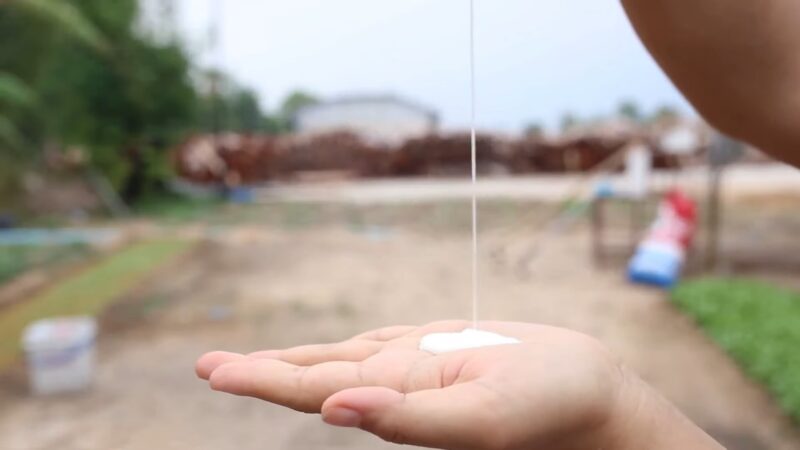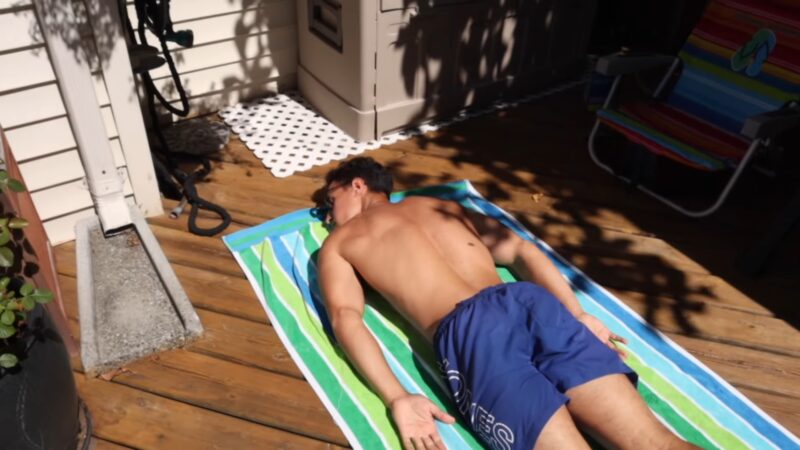Have you ever relaxed in the shade on a sunny day and wondered if you could still get a tan? It’s a question that crosses the minds of many outdoor enthusiasts and sunbathers.
While it seems counterintuitive, tanning in the shade is a topic that intertwines with intriguing aspects of science and health. This article explores the complexities of UV radiation, the mechanisms of skin tanning, and the phenomenon of indirect sun exposure.
UV Rays and Tanning
Tanning is a biological response to ultraviolet (UV) rays from the sun, triggering the skin to produce melanin, a natural pigment. Melanin’s primary role is to protect skin cells from the damaging effects of UV radiation even in moderate exposure.
The process of tanning is influenced by two types of UV rays:
UVA Rays: These rays penetrate deep into the skin and are primarily responsible for tanning. Unlike UVB rays, UVA rays maintain a consistent intensity during daylight hours throughout the year.
They can penetrate through clouds and even glass, contributing to tanning and aging of the skin. UVA rays are less intense than UVB but can still cause significant damage over time.
UVB Rays: These rays are the primary cause of sunburn and play a significant role in developing skin cancer. The intensity of UVB rays varies depending on factors like time of day, season, and geographic location.
They are most intense during midday and in the summer months. Unlike UVA rays, UVB rays cannot penetrate glass, but their direct impact on the skin is more severe.
Shaded Tanning

While direct sunlight is a well-known source of UV radiation, shaded areas are not entirely free from UV exposure. Here’s why tanning can still occur in the shade:
Reflected UV Rays
Surfaces around you, like water, sand, concrete, and even snow, can reflect UV rays. This reflection can indirectly expose your skin to UV radiation, contributing to tanning.
It’s a common misconception that shade completely blocks UV rays, but in reality, reflective surfaces can significantly increase UV exposure.
Scattered UV Rays
The atmosphere scatters UV rays, a phenomenon that allows these rays to reach you even when you’re not in direct sunlight. This scattered radiation is less intense than direct sunlight but can still contribute to tanning and skin damage.
It’s an important factor to consider when seeking shade, as it means complete UV protection is not guaranteed.
Factors Affecting Tanning in the Shade
The extent of tanning in the shade can be influenced by various environmental and situational factors:
- Surrounding Environment: The presence of reflective surfaces like water, sand, or snow can increase the UV radiation in shaded areas. For instance, water can reflect up to 80% of UV rays, significantly increasing exposure. Being near these surfaces, even in the shade, can lead to unexpected tanning and sunburn.
- Time of Day: The sun’s position affects UV intensity, with the rays being strongest between 10 a.m. and 4 p.m. During these hours, even shaded areas receive higher levels of indirect UV radiation, making tanning more likely. It’s crucial to be aware of the time of day when planning outdoor activities, especially if seeking to minimize UV exposure.
- Cloud Cover: Clouds can have a varying effect on UV radiation. While they can block some UV rays, they can also scatter and sometimes even intensify UV radiation, especially thin or scattered clouds. This phenomenon can lead to a false sense of security on overcast days, where one might underestimate the potential for tanning and sunburn.
Health Risks and Safe Practices
Tanning, whether in direct sunlight or the shade, poses health risks. It’s crucial to understand and mitigate these risks for a safe and enjoyable outdoor experience:
- Skin Damage: UV radiation can cause both immediate and long-term skin damage. Immediate effects include sunburn and tanning, while long-term exposure can lead to premature aging, such as wrinkles and age spots, and increase the risk of skin cancer. It’s important to note that every tan indicates skin damage, as it’s the body’s response to UV-induced injury.
- Eye Damage: Prolonged exposure to UV rays can also harm the eyes. It increases the risk of developing cataracts and other eye conditions like photokeratitis, often referred to as “snow blindness.” Wearing sunglasses with UV protection is crucial when spending time outdoors, even in shaded areas.
To tan safely and responsibly, consider these tips:
Use Sunscreen

Regular application of broad-spectrum sunscreen with an SPF of 30 or higher is essential, even in shaded areas, as lower SPF products are not as effective. It’s important to reapply sunscreen every two hours, or more often if you’re swimming or sweating, to maintain adequate skin protection.
Wear Protective Clothing
Clothing can be a great barrier against UV rays. Wearing hats with wide brims and sunglasses with UV protection can significantly reduce exposure. There are also clothing options with built-in UV protection for additional safety.
Limit Exposure
Try to minimize the time spent in the sun during peak UV hours. Seeking shade is beneficial, but remember that indirect UV exposure can still occur. Plan outdoor activities for early morning or late afternoon when the sun’s rays are less intense.
FAQs
Does the type of shade affect the amount of UV exposure and tanning potential?
Yes, the type of shade significantly influences UV exposure. Natural shade, like that from trees, tends to scatter more UV rays than artificial structures like umbrellas or solid canopies. The density and material of the shade provider also play a role. For instance, a thick canopy will block more UV rays compared to a thin fabric umbrella.

Can window glass in homes or cars protect you from tanning?
Standard window glass in homes and cars blocks most UVB rays but allows a significant amount of UVA rays to pass through. This means you can still tan through a window, especially during prolonged exposure. Some modern windows and car windshields are treated to block both UVA and UVB, offering better protection.
Is it possible to tan on a cloudy day when in the shade?
Yes, it’s possible to tan in the shade even on cloudy days. Clouds can diffuse UV rays but don’t completely block them. This diffused sunlight can still lead to tanning, especially since people might be less inclined to use sun protection on overcast days.
Does skin type affect how quickly you tan in the shade?
Skin type greatly affects how quickly and intensely you tan, both in direct sunlight and in the shade. Individuals with lighter skin that burns easily will tan and burn quicker than those with darker skin tones that have more melanin. However, all skin types are susceptible to UV damage and should be protected.
Can dietary changes help protect against UV damage while tanning in the shade?
Diet alone cannot fully protect against UV damage, but certain foods rich in antioxidants can support skin health. Foods high in Vitamins C and E, like citrus fruits and nuts, can help combat skin damage caused by UV rays. Nonetheless, they should complement other protective measures like sunscreen, not replace them.
Are there any specific times of the year when tanning in the shade is more likely?
Tanning in the shade can occur more readily during the summer months when the intensity of UV rays is higher. However, geographical location also plays a role. For example, areas closer to the equator experience stronger UV radiation year-round, increasing the likelihood of tanning in the shade regardless of the season.
Summary
Tanning in the shade is a nuanced topic that combines elements of environmental science and personal health. While shade provides some protection against direct sunlight, indirect UV exposure can still lead to tanning and associated risks.
Understanding these dynamics is key to enjoying the outdoors while protecting your skin and health. By adopting safe sun practices, you can appreciate the warmth of the sun responsibly, ensuring your skin’s health and vitality for years to come.
